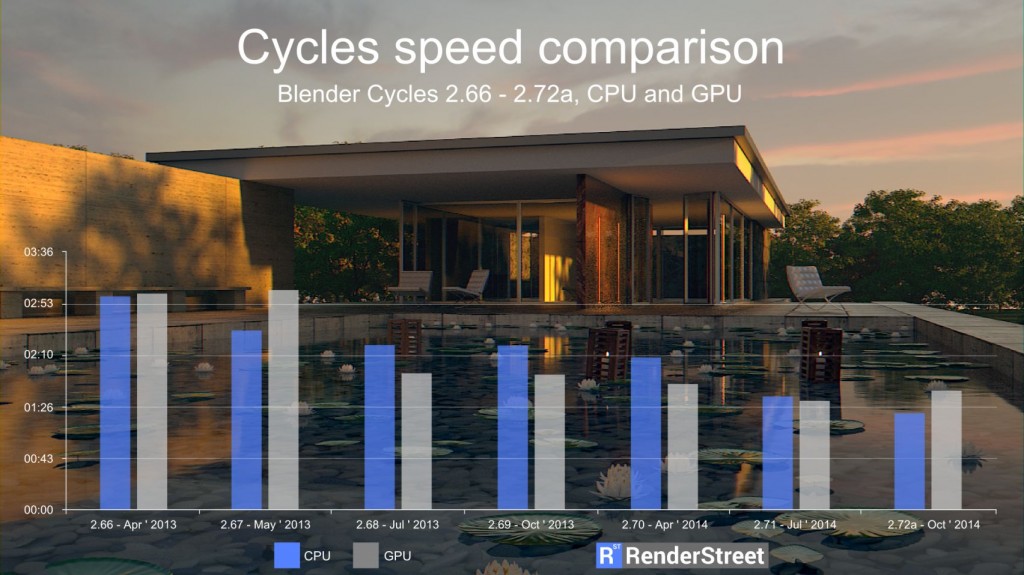Blender’s fast-paced release cycle is a unique differentiator in the 3D modeling world. Its purpose is to come up with new features, updates and bug fixes fast. Among the trade-offs stands a continuous learning process and the fact that there are bugs that need to be fixed. But this is part of Blender’s charm, and I think it’s well worth it.
During the last few releases, the ‘Cycles improvements’ section in the release notes has been constantly populated. And almost all recent releases come with the promise of speed improvement.
At RenderStreet, we probably have the widest array of Blender versions available for rendering from all render farms (2.63 and upwards). So we put on our scientist lab coats in an attempt to test them out, see how they perform on server-grade hardware and identify the best version available for our users. The model of choice was the Pabellon Barcelona Cycles scene that Hamza Cheggour published on his eMirage site. This file is on its way to replace the famous BMW as the ‘standard’ benchmark for Cycles, so we decided to use it for this purpose.
The tests started with a̶ ̶b̶e̶e̶r̶ Blender 2.66 and went through the newest version, Blender 2.71. Server configurations used were 2 x Tesla M2090 for GPU, and 2 x Xeon E5-2670 for CPU. RenderStreet render times for Blender Cycles are revealed in the chart below:


























